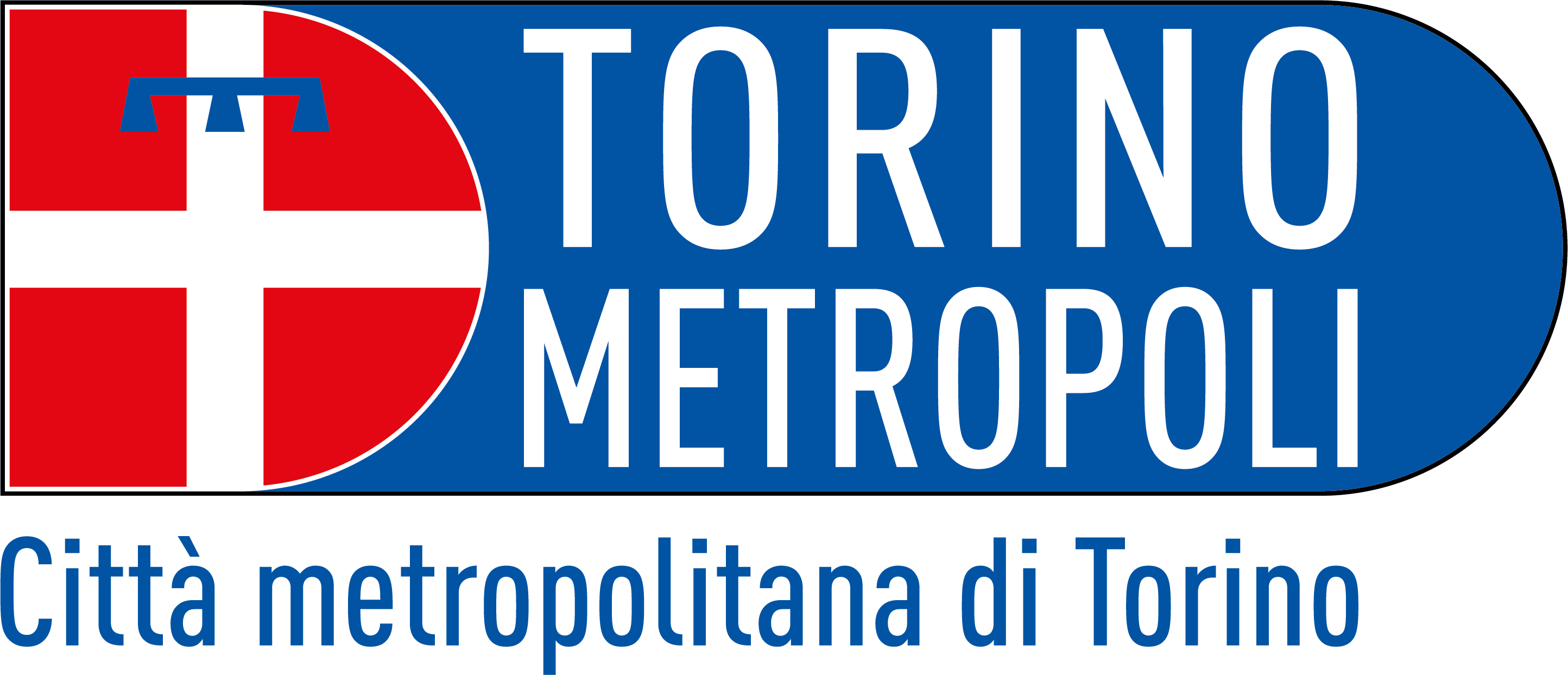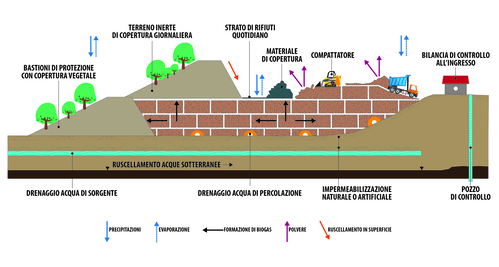The European Commission has for several years foreseen that in the Member States the use of landfills is increasingly limited: in the so-called "Circular economy package", among other things, there is a goal of reducing landfill placement for all waste up to 10% by 2030. In the meantime, before the implementation of the measures of the package leads to the revision of the European directives on waste, the regulations in force continue to be applied.
There are three different types of landfill for waste:
Modern landfills must be built according to a structure that allows them to isolate waste from the soil, meet hygiene standards and the biosphere and reuse biogas (3), produced during the biological processes that take place in the mass of waste, as fuel for generation of electrical and thermal energy. The figure shows what is the structure of a landfill for urban and non-hazardous waste.
The typical structure of a controlled landfill includes a clay bottom on which an insulation called "geomembrane" (4) is placed, a layer of sand or other material with similar properties for the absorption and recovery of the percolate (5), one surface layer of soil for the coverage and growth of plants and the systems of collection, control and storage or treatment of emissions (biogas and leachate). The leachate collection system usually consists of a network of slotted pipes immersed in a layer of draining gravel just above the waterproofing layer. This system allows intercepting the leachate flows and sending them to special treatment plants.
The biogas produced in landfills cannot be left free in the air: in fact it is a very polluting gas and that is responsible for a greenhouse effect 20 times greater than that from carbon dioxide (CO2). Therefore, as for the leachate, it is also intercepted by means of special pipes and sent to the burners: thanks to the heat produced during combustion, electricity is produced. In general, in the landfill the waste is subject to the natural processes of anaerobic decomposition, for over 30 years from the transfer, with the consequent production of biogas and leachate for almost the entire period.
Landfills in the metropolitan area
In 2016, around 45 thousand tonnes of municipal waste were disposed of in non-hazardous waste landfills in the metropolitan area. The landfills of the provincial public system received about 9% of urban waste remaining after the separate collection in 2016, compared to 25% in 2014 and 75% in 2013: the system of landfills in the Turin area is therefore in a phase of settling on a residual level.
Note
1inert waste: solid waste that does not undergo any physical, chemical or biological transformation, for example the residues of small building works
2 hazardous wastes: these are wastes that, due to the high concentration of pollutants present inside them, can be dangerous for the environment and animals, such as eg. batteries, drugs, oils, etc ...
3biogas: mixture of various types of gas, mainly methane, produced by bacterial fermentation in anaerobiosis (absence of oxygen) of organic plant or animal residues.
4geomembrane: plastic sheet that acts as a barrier and prevents polluting substances from reaching the surrounding soil.
5leachate: a liquid that originates mainly from the infiltration of water into the mass of waste or from its decomposition.

